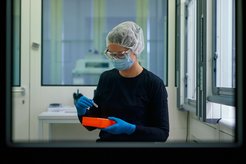Exploring Funerary and Embalming Rituals in Ancient Egypt through Metabolic Profiling

Ancient Egyptian mummification involved a cocktail of plant mixtures, colloquially referred to as embalming fluids, specifically used to preserve the body as well as human organs for the afterlife. The embalming rituals were practiced throughout most of Egyptian history and continued through the Roman period, making them a characteristic feature of Egyptian funerary archaeology. However, the ingredients used in this process remain poorly identified and historian and archaeologists have widely discussed their identities.
In this study, we integrate complementary approaches in metabolomic profiling and lipid residue analysis to shed light on the identity of the ingredients used during mummification. Furthermore, practices involved in body treatment and preparing the deceased for the afterlife, which are reported in ancient texts, can be complemented by the actual substances and remedies used to preserve these organs.









